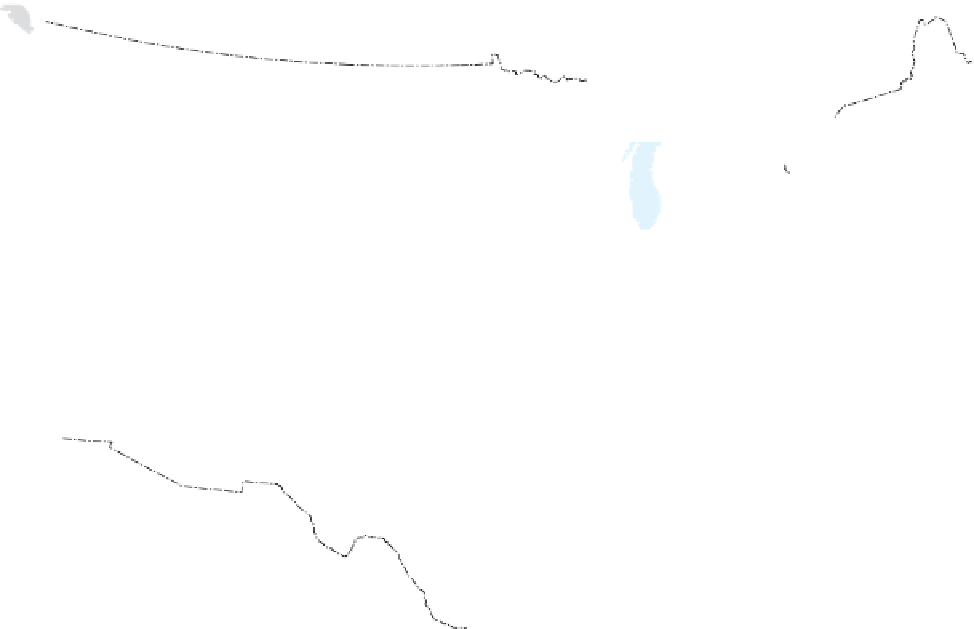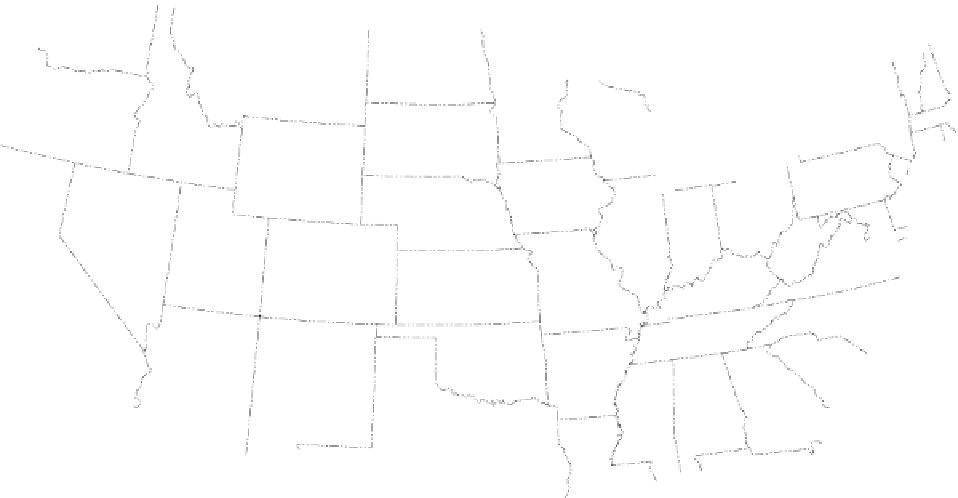Geography Reference
In-Depth Information
0
250
500
750 Kilometers
0
250
500 Miles
Figure 1.7
Desirable Places to Live.
Where Pennsylvanian and Californian college students would
prefer to live, based on questionnaires completed by college students.
Reprinted by permission of
:
P. R. Gould and R. White, Mental Maps. Harmondsworth: Penguin Books, 1986, pp. 55 and 58.
built (downtown or in a suburb), given the characteristics of
existing neighborhoods and new developments, the median
income of people, the locations of other shopping areas, and
the existing and future road system. Similarly, a geographer
could determine the best location for a wildlife refuge, given
existing wildlife habitats and migration patterns, human set-
tlement patterns, and road networks.
A spatial perspective invites consideration of the rela-
tionship among phenomena in individual places—including
the relationship between humans and the physical world.
Thus, the second of the fi ve themes concerns
human-
environment
interactions. Why did the Army Corps of
Engineers alter Florida's physical environment so drastically
when it drained part of the Everglades? Have the changes in
Florida's environment created an easier path of destruction
for hurricanes? Why is the Army Corps of Engineers again
changing the course of the Kissimmee River, and what does
that mean for farmers around the river and residential devel-
opments in the south of Florida? Asking locational ques-
tions often means looking at the reciprocal relationship
between humans and environments.
The third theme of geography is the
region
.
Phenomena are not evenly distributed on Earth's surface.
Instead, features tend to be concentrated in particular
areas, which we call regions. Geographers use fi eldwork
and both quantitative and qualitative methods to develop
insightful descriptions of different regions of the world.
Novelist James Michener once wrote that whenever he
started writing a new book, he fi rst prepared himself by
turning to books written by regional geographers about
the area where the action was to occur. Understanding the
regional geography of a place allows us to make sense of
much of the information we have about places and digest
new place-based information as well.
The fourth theme is represented by the seemingly
simple word
place
. All places on the surface of Earth
have unique human and physical characteristics, and one
of the purposes of geography is to study the special char-
acter and meaning of places. People develop a
sense of
place
by infusing a place with meaning and emotion, by
remembering important events that occurred in a place,
or by labeling a place with a certain character. Because we
















































































































































































































































































































































